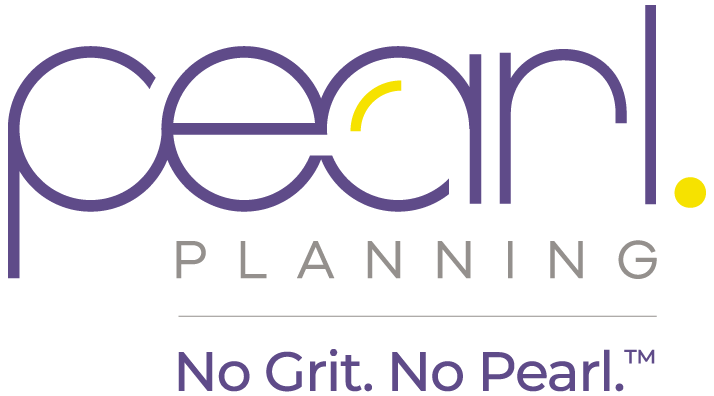We all know how chaotic this time of year can become. With the holiday season approaching, it’s easy to allow our plates to fill up and forget to make sure our year-end finances are in order. To help make your life a little bit easier, we have put together a year-end checklist of 7 year-end financial planning moves.
Spend down your Flex Savings Account (FSA)
If you have an FSA through your employer, make sure you have a plan for spending down your remaining balance before the end of the year. In most cases, you are required to “use or lose” these funds each calendar year.
Review your anticipated healthcare expenses for the rest of the year and consider stocking up on qualified supplies for upcoming months if you anticipate having excess funds. Some ideas for spending down your remaining FSA balance include:
- Eyecare appointments or glasses/contact lenses
- Dental visits or procedures
- First-aid supplies
Don’t let your remaining FSA balance go to waste this year!
Boost 401(k) savings for next year
Check on your current 401(k) elective deferrals and see if you can boost your savings for the upcoming year. Slightly increasing savings into your 401(k) each year is an easy and painless way to make sure you are setting yourself up for financial success down the line.
Here are some important items to keep in mind when it comes to your employer retirement plan:
- Remember that 401(k) and 403(b) contributions must be made in the form of salary deferrals so check with your HR team to determine the easiest way for you to boost your savings.
- The 2021 401(k) and 403(b) contribution limit is $19,500. Keep in mind that if you are over age 50, you qualify to contribute an additional $6,500 to your plan.
- If you are already maxing our your 401(k) for the upcoming year, consider increasing your savings into your IRA.
Review all accounts for after-tax retirement contributions
As it stands right now, a back door Roth IRA conversion allows you to make a non-deductible, after-tax contribution to a Traditional IRA and then convert your contribution tax-free into a Roth IRA. For many, this has been a way to continue making Roth IRA contributions even after earning more than the Roth IRA earning limits. Along similar lines, currently you have the ability to fund an employer retirement plan with after-tax dollars and then convert the funds to a Roth. This is known as a “Mega-Backdoor Roth” contribution. Although there was some concern that these strategies may be phased out, it is no longer looking like that will be the case for the time being.
Depending on your tax situation, it may make sense to review your accounts for any after-tax retirement contributions and consider moving the funds to your Roth IRA. This will allow the funds to continue to grow in the Roth IRA tax-free.
Consider whether you should accelerate income
If you expect that you may be jumping to a higher tax bracket in 2022, it may make sense to accelerate some of your income into the 2021 tax year.
There are many ways to accelerate income into the current year, but here are a few to consider:
- Harvesting capital gains: When you sell an appreciated asset in a taxable account, typically you owe taxes on the gain in the year the sale was made. Although there is no longer the immediate concern of capital gains tax increasing in 2022, it may still make sense to consider harvesting a capital gain depending on your specific tax situation.
- Elect out of installment sales: An installment sale allows you to receive payments for a sale over time, usually over a several-year period. In some cases, it can be beneficial to spread out your taxable income over multiple years. However, if you are expecting to be in a higher tax bracket starting in 2022, it may make sense to recognize the entire gain on sale in the current 2021 tax year.
- Exercise stock options: There are many factors to consider when it comes to the right time to exercise or sell your stock options. Depending on the type of stock options you own, it may make sense to exercise or sell your stock options in order to accelerate income into the current tax year to capitalize on current year tax brackets.
See the links below to check out more information on how taxes apply to your non-qualified and incentive stock options.
Read our blog about incentive stock options (ISO)
Check out our blog about non-qualified stock options (NQSO)
Please keep in mind that these situations vary drastically from person to person and you should always consult with your CPA and financial planner to come up with a game plan based on your individual situation.
Make (or delay) charitable gifts
If you are inclined to donate to a cause that means a lot to you, you likely aren’t doing it for any personal gain. However, the timing of your charitable gifts can be an important tax planning strategy.
If you expect you may be bumping into a higher tax bracket in the upcoming year, you may benefit from shifting some of your charitable giving into the 2022 tax year, as the tax deduction will be even more valuable with your increased tax bracket.
Although there is no longer the concern of the capital gain tax increasing for the time being, you may still benefit from donating long-term appreciated assets to your favorite charity. In most cases, you have the ability to deduct the fair market value of the donation. However, you are not typically taxed on the unrealized gain or appreciation on your donated asset.
Beneficiary designation checks
This is an easy one! Review your most recent financial meeting notes or shoot a quick email to your financial advisor to confirm your beneficiary designations are listed correctly.
If you do not have beneficiary designations listed on your accounts, consider who it makes sense to add. Although none of us like to think about end-of-life items, we can make our loved ones’ lives so much easier by ensuring that all of our accounts have a beneficiary designation listed.
Set goals for 2022
Tis the season for resolutions! Spend some time thinking about how far you’ve come over the past year. Consider all that you have accomplished. What has changed in terms of priorities from last year? What are you hoping to accomplish in the new year? This can be personal or financial.
Once you have set a few goals for the new year, try to break those goals into smaller bite-sized pieces. Perhaps there is a small portion of your goal that can be accomplished each week or month of the upcoming year.
We know this list can be overwhelming at an already busy time of year! Keep in mind that several of these items may not apply to your individual situation or circumstances. Try to prioritize the most time-sensitive items first. If you feel overwhelmed or if you don’t know where to start, remember that we are here to help! If you would like to discuss how to make the most of the remainder of 2021 as it relates to your financial plan, please schedule a meeting.


